The first ARC "command sets"
It was hiding. There was no sign of it in its assigned space. A shiver ran up my
spine. Could it have been stolen...or even accidently thrown away? Nah...it wasn't a dark and stormy night... Naturally, it turned up behind three
pallet loads of boxes - the last one we moved, of course. (The first four digits stenciled on
the boxes is the year of acquisition.)
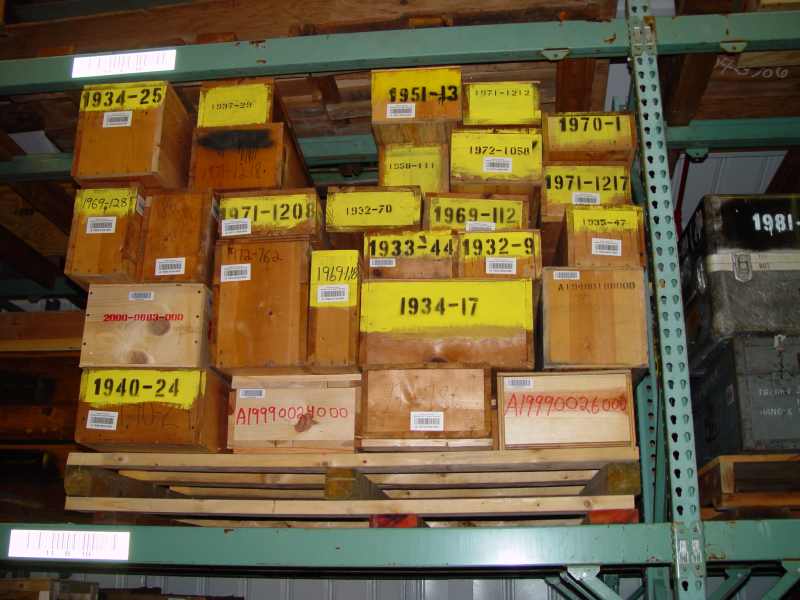 Gotta be here somewhere...
Gotta be here somewhere...
Finally it appeared. An innocuous wooden box with six wood screws in the plywood cover. Hardly the
object of so much interest over the years.
 The size is about right...
The size is about right...
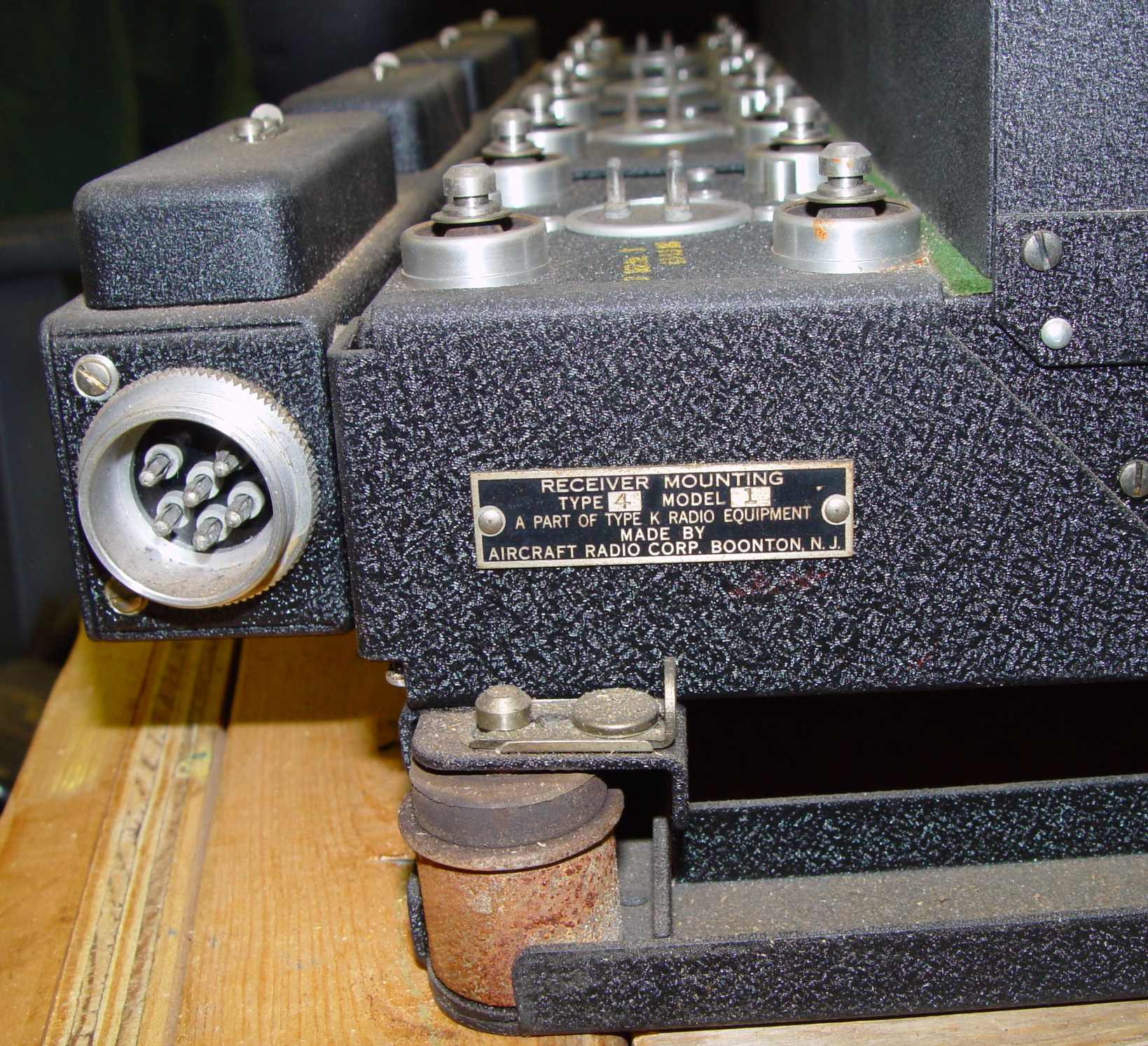 Correct type, at least. Funny - no other metal tags on any other components except the dynos.
Correct type, at least. Funny - no other metal tags on any other components except the dynos.
 Just another broadcast band receiver, no doubt.
Just another broadcast band receiver, no doubt.
 Well, maybe there is another frequency or two here...all serial no. 1, too
Well, maybe there is another frequency or two here...all serial no. 1, too
Strange - no other indentifiers anywhere - just the ink stamped letters on the dynamotor shelf.
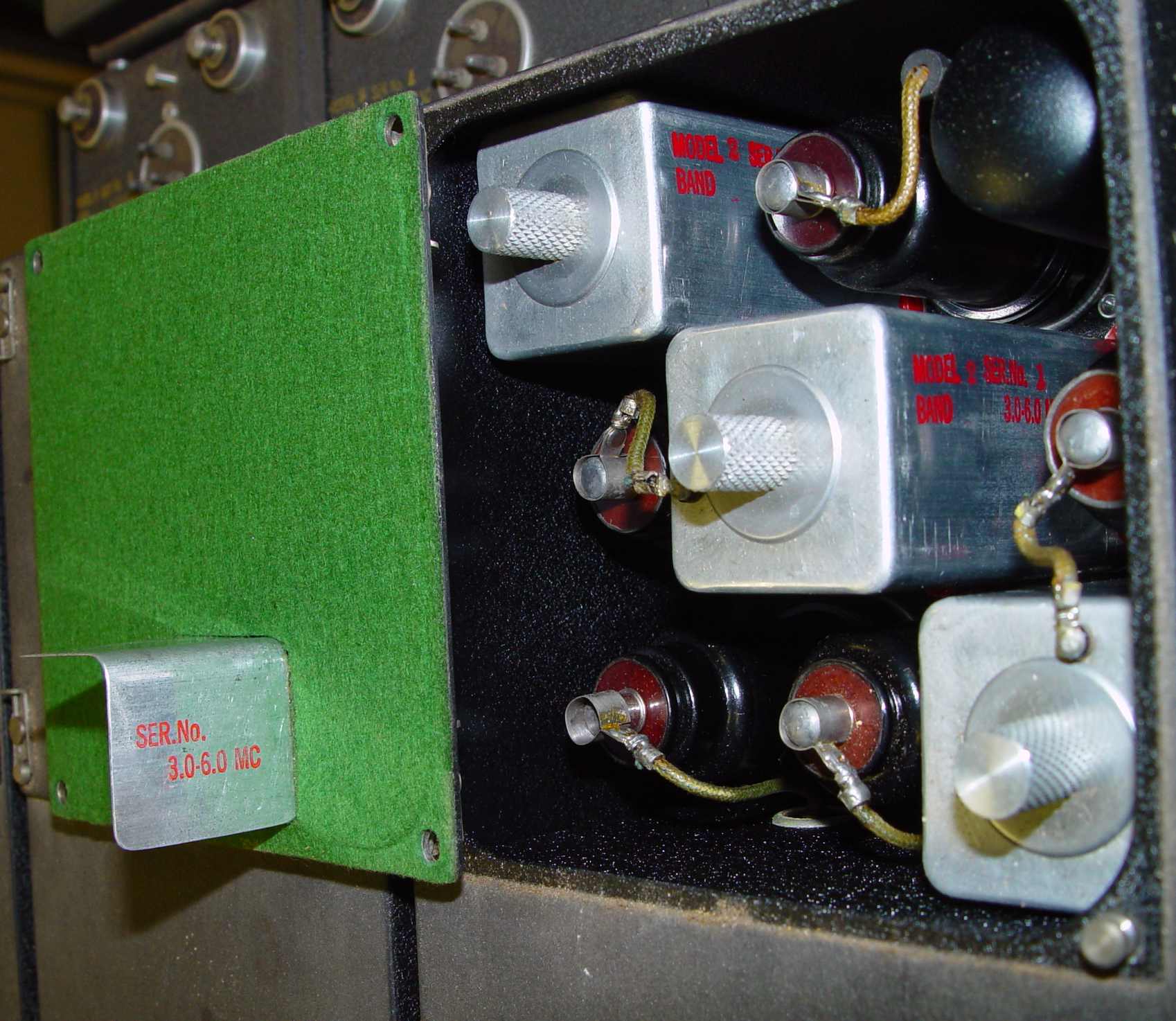 Mostly double ended tubes... But wait - that little shield is in a different place on the MF receivers!
Mostly double ended tubes... But wait - that little shield is in a different place on the MF receivers!
 Interesting design for a mica insulated tube socket. The audio output tube is apparently a prototype of the 12A6.
Interesting design for a mica insulated tube socket. The audio output tube is apparently a prototype of the 12A6.
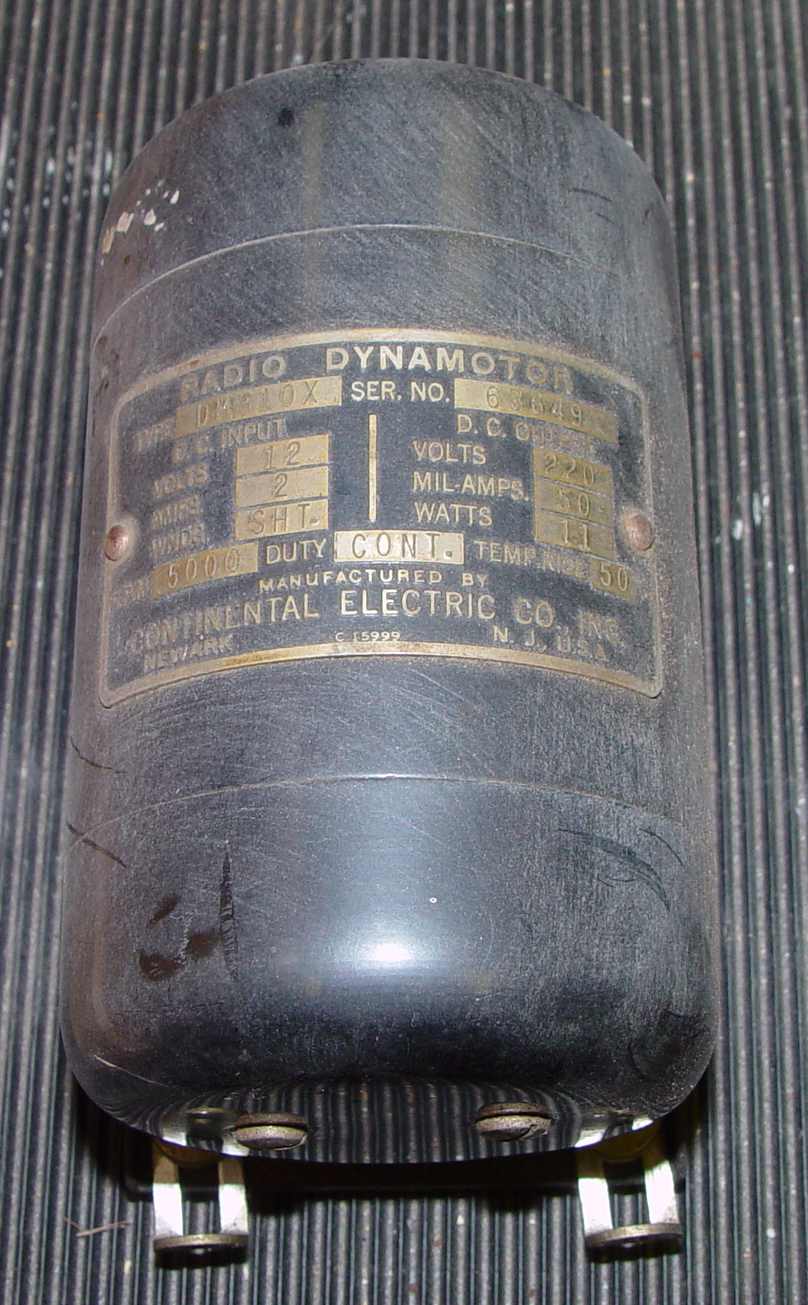 Fairly low voltage - 220vdc
Fairly low voltage - 220vdc
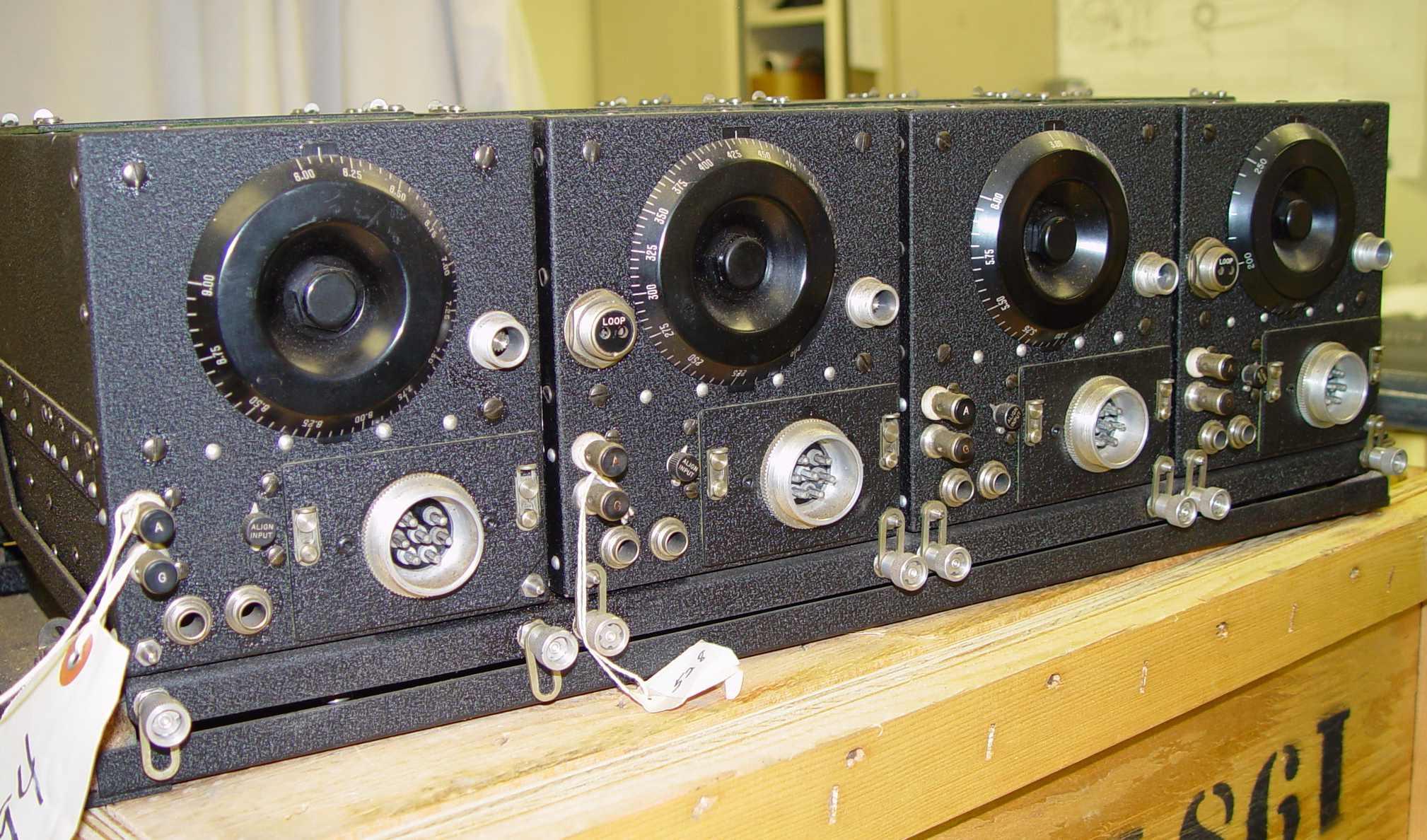 Guess it's not an ARC-5 after all...
Guess it's not an ARC-5 after all...
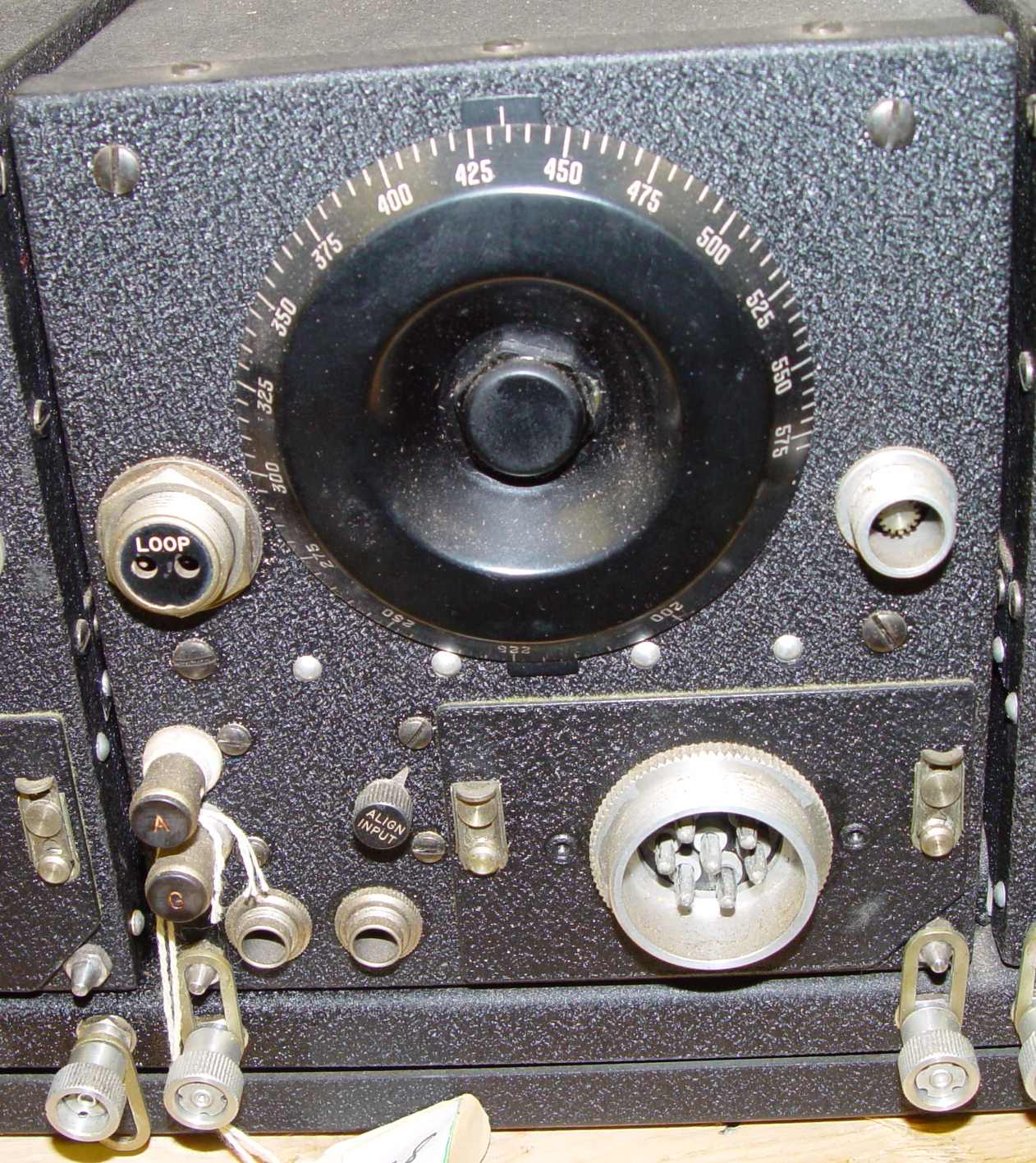 Sure doesn't look like my ol' R-23/ARC-5...but the resemblance is there.
Sure doesn't look like my ol' R-23/ARC-5...but the resemblance is there.
These receivers are all that survive from a prototype made for the Navy for evaluation under a Confidential contract. They
were donated by the well-known "Surplus Corner" author Gordon Eliot White, who rescued them from the attic of a closed dowm
successor to the Aircraft Radio Corporation. Below is the connection diagram for that system.
 System diagram for the entire receiver/transmitter system, compliments of Gordon White
System diagram for the entire receiver/transmitter system, compliments of Gordon White
Though you will probably not be seeing these receivers anytime soon, you may someday see this first prototype of the command sets at your friendly neighborhood Udvar-Hazy
Annex. Depending on interest and a rationale for interpreting the artifacts in a way that interests the general public, you might also see one of the Eighth Air Force blind
landing modifications, as well as the Naval Research Lab's experiment in crystal control of the ARA receiver...
Return to AN/ARC-5 pages










